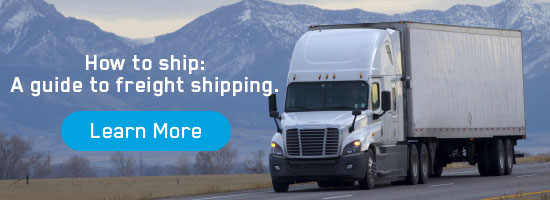Shipping by rail: What you should know.
November 1, 2009

Railroads reportedly move about 40 percent of American freight and are therefore critical to the United States economy. In addition to connecting businesses across the country, rail also contributes billions of dollars each year to the economy via their own purchases, jobs and taxes.
While there are still passenger trains, U.S. rail companies are largely used to carry industrial goods like coal, chemicals, non-metallic minerals such as phosphate rock, sand, crushed stone and gravel, food products, steel, lumber, paper, motor vehicles and scrap materials. These are considered freight railroads.
Freight railroads operating in the U.S. fall into five categories: Class I, regional, local linehaul, switching & terminal carriers and Canadian carriers. As understanding these five categories is important prior to shipping by rail, we’ve broken down each below:
1. Class I.
Class I railways are the largest railroads, accounting for 70% of industry mileage and 92% of industry revenue. Class I railroad companies include Burlington Northern and Santa Fe, Norfolk Southern, CSX and Union Pacific. Class I carriers typically operate across many different states and usually concentrate on long-haul, high-density traffic lanes.
2. Regional.
Regional railroads are slightly smaller, linehaul railroads. They typically operate 400 to 650 miles of rail and serve two to four contiguous states. Most regional railroads employ between 75 and 500 workers.
3. Local linehaul.
Local linehaul rail carriers operate fewer than 350 miles and earn less than $40 million per year. These rail companies typically perform point-to-point service over short distances. Most operate less than 50 miles of road and serve only a single state.
4. Switching and terminal.
Switching and terminal (S&T) carriers are railroads that perform pick-up and delivery services within a specified area for linehaul carriers. In some cases, S&T carriers connect load traffic between linehaul railroads.
5. Canadian carriers.
Finally, the two major Canadian freight railroads, Canadian National Railway and Canadian Pacific Railway, have extensive U.S. operations.
Although it may be surprising to the layperson, railroads move 47 percent of intercity freight in the U.S., more than any other mode of transportation. This share has increased slightly over the last decade due to costs of railroad freight in comparison to other modes of freight transport.
Over the past ten years, intermodal traffic – the movement of trailers and containers by rail and at least one other mode of transportation, usually trucks – has been the fastest growing rail traffic segment.
Rail intermodal, because of the use of containers, transports a wider variety of goods than traditional rail freight. As a result, more consumer products are logging time on the rails and manufacturers and retailers are enjoying the cost savings attributable to the use of the rail component of intermodal transport.
Whether a shipper needs rail freight or intermodal transport, Freightquote by C.H. Robinson can quote, book and track any shipment that can travel over the rails. If intermodal services are necessary, we can even consolidate billing so that the shipper receives and pays only one invoice. Efficiencies and savings are realized at every step of the process.
Have questions on intermodal shipping? Let us know. One of our shipping experts is happy to help!
Image Credit: iStock
Topics:
Get Your Shipping Quote



